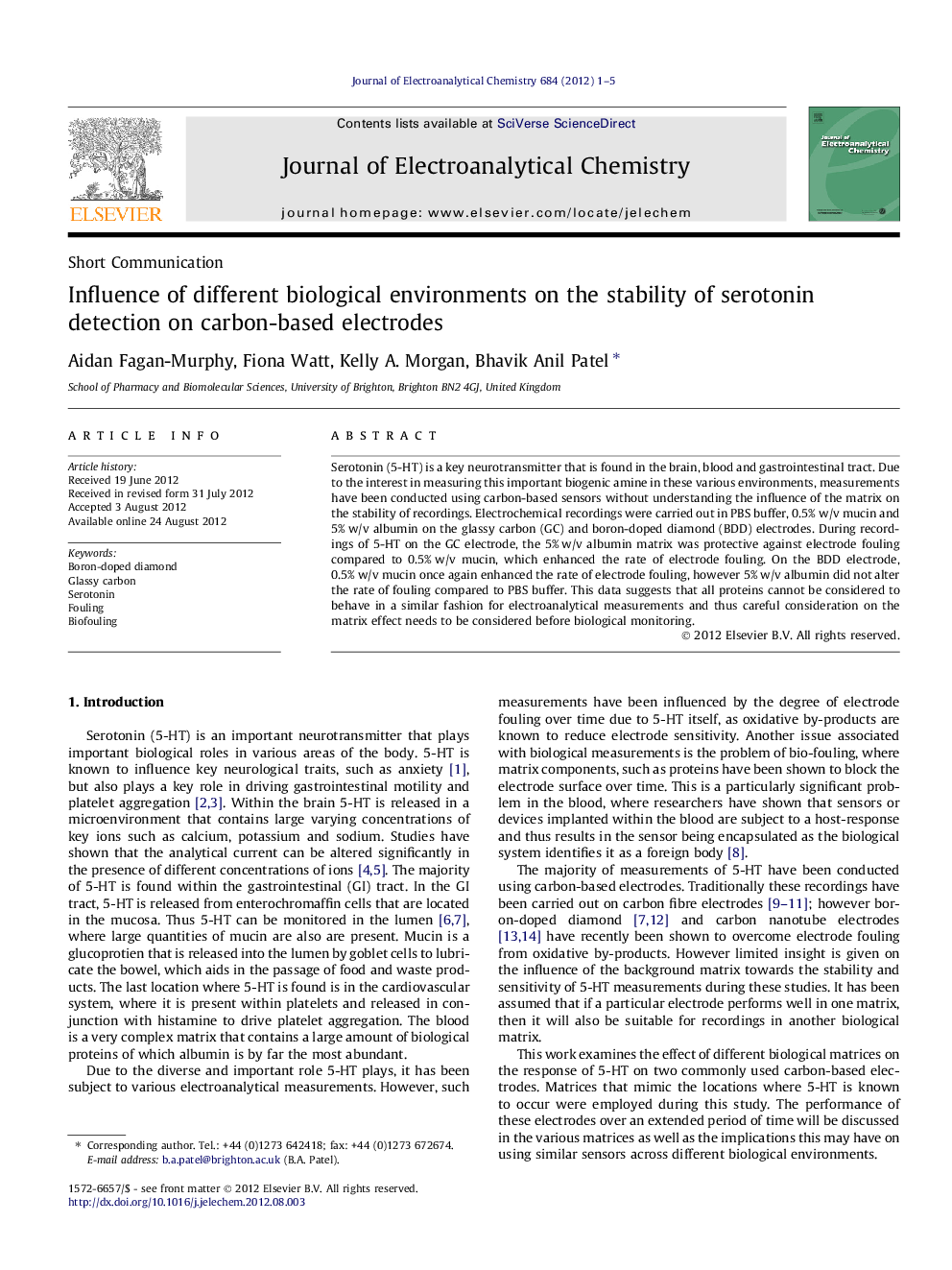| Article ID | Journal | Published Year | Pages | File Type |
|---|---|---|---|---|
| 219248 | Journal of Electroanalytical Chemistry | 2012 | 5 Pages |
Serotonin (5-HT) is a key neurotransmitter that is found in the brain, blood and gastrointestinal tract. Due to the interest in measuring this important biogenic amine in these various environments, measurements have been conducted using carbon-based sensors without understanding the influence of the matrix on the stability of recordings. Electrochemical recordings were carried out in PBS buffer, 0.5% w/v mucin and 5% w/v albumin on the glassy carbon (GC) and boron-doped diamond (BDD) electrodes. During recordings of 5-HT on the GC electrode, the 5% w/v albumin matrix was protective against electrode fouling compared to 0.5% w/v mucin, which enhanced the rate of electrode fouling. On the BDD electrode, 0.5% w/v mucin once again enhanced the rate of electrode fouling, however 5% w/v albumin did not alter the rate of fouling compared to PBS buffer. This data suggests that all proteins cannot be considered to behave in a similar fashion for electroanalytical measurements and thus careful consideration on the matrix effect needs to be considered before biological monitoring.
► Influence of various biological matrixes on the monitoring of serotonin was studied. ► Studies were carried out using glassy carbon and boron-doped diamond electrodes. ► Different proteins can either increase or decrease the rate of electrode fouling. ► Electrode stability must be investigated in the biological matrix before use.
